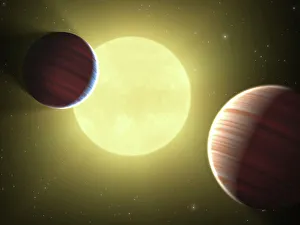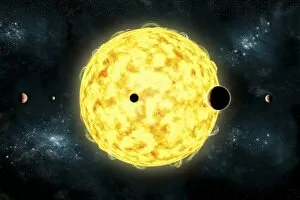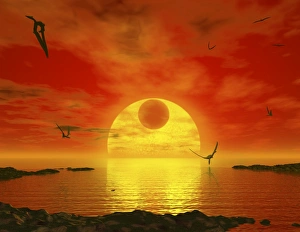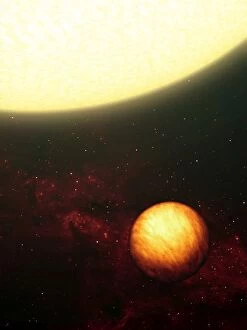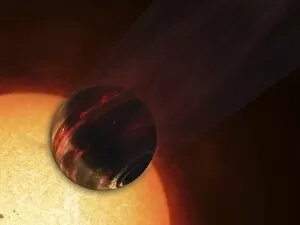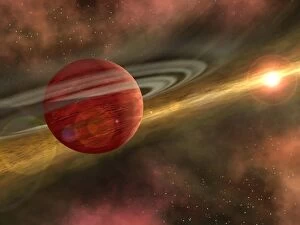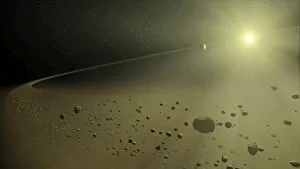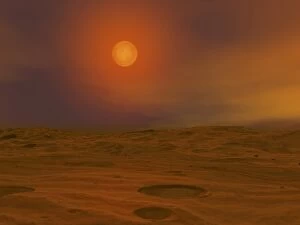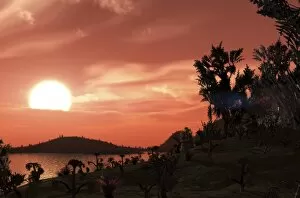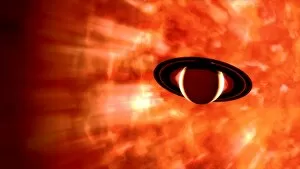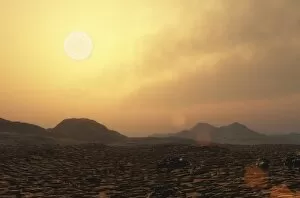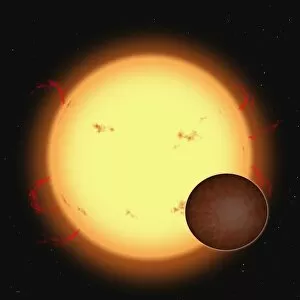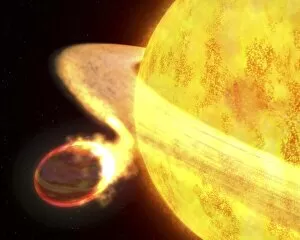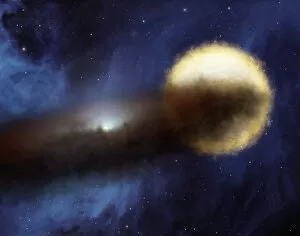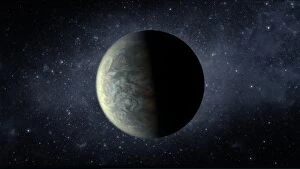Sun Like Collection
"Exploring the Vastness of the Universe: Sun-Like Planets and Beyond" Artists have imagined two Saturn-sized planets discovered by Kepler
All Professionally Made to Order for Quick Shipping
"Exploring the Vastness of the Universe: Sun-Like Planets and Beyond" Artists have imagined two Saturn-sized planets discovered by Kepler, giving us a glimpse into distant planetary systems. (Artwork C013 / 9945) Comparing different planetary systems through stunning artwork, unveiling the diversity of our universe. Step into the mesmerizing Kepler-11 planetary system with this artist's concept, showcasing its unique celestial bodies. Journey to extrasolar planet Gliese 581 c and immerse yourself in a hypothetical view across its rocky and watery terrain. Upsilon, another sun-like star similar to our own, harbors a planet within its habitable zone - could it hold extraterrestrial life? Witness an awe-inspiring moment as a comet passes Earth on its return journey from around the mighty Sun. Behold a giant planet gracefully orbiting a sun-like star called 79 Ceti - an extraordinary sight in our vast cosmos. Dive into the imagination of artists with their captivating concept of 51 Pegasi, revealing yet another fascinating exoplanet system. Marvel at Kepler 444 through this artist's vision - unlocking secrets about ancient stars and their intriguing worlds. Take a glimpse into Earth's future as we witness the molten world from three billion years ahead while gazing at our familiar Sun. Let your imagination soar as flying life forms grace crimson skies on Gliese, an earth-like extrasolar planet beyond our reach.

